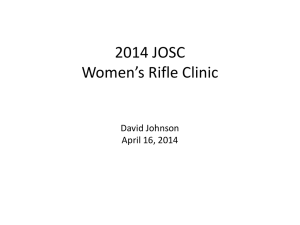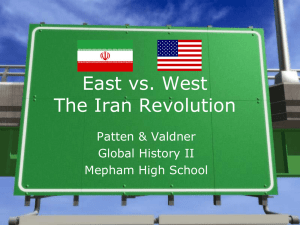An Overview of Water Resources Management in IR of Iran
advertisement
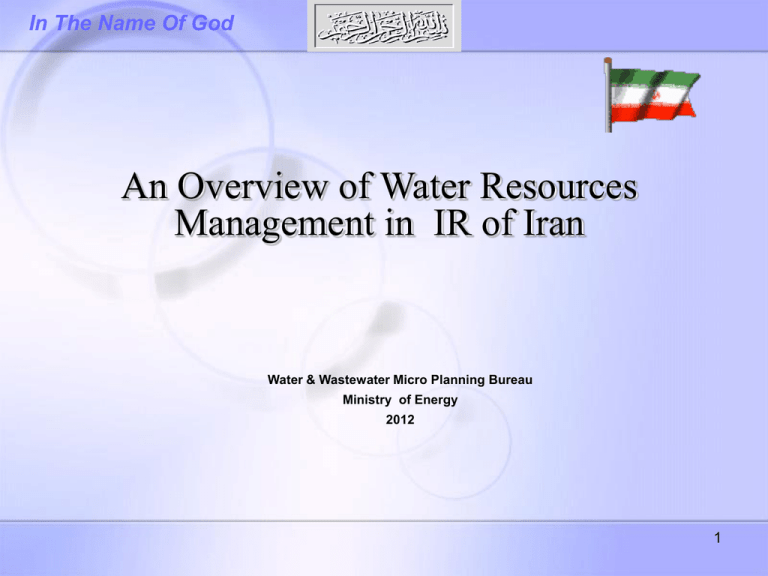
In The Name Of God An Overview of Water Resources Management in IR of Iran Water & Wastewater Micro Planning Bureau Ministry of Energy 2012 1 Contents 1. Water Resources Potentials and Related Issues 2. Development Procedure of Water Sector 3. Major Challenges and Trends in Iranian Water Resources Management 4. Recent Approaches and Water Policies 5. Conclusion 2 1. Water Resources Potentials and Related Issues 3 1.2: World Climate Classification 4 1.3: Population Growth and Water Scarcity Based on these unpleasant facts, improving wise water policy strategies that would promote water use efficiency has been put in the priorities of Iran water resources management plans. 5 1.4: The Available Fresh Water Per Capita 16000 14000 12000 Cubic Meter 10000 World 8000 Iran 6000 MENA 4000 2000 0 1960 1990 2025 45 years ago: The available fresh water perYear capita in Iran was ½ of the world average in the early years of 1960 15 years ago: The available fresh water per capital in Iran was 1/3 (one third) of the worlds related average. In next 20 years: The per capita of available fresh water in Iran would be ¼ (one fourth) of the world’s related average. Less than 10 years in the future Some parts of the country would be encountered with somehow water crisis conditions. 6 1.5: Iran Location Area: 1.648 million Population: 75 million No of provinces: 30 Average Rainfall: 250 mm Neighboring Countries: Afghanistan, Pakistan, Iraq Turkmenistan, Azerbaijan, Armenia, Turkey Saudi Arabia Oman Kuwait Qatar Bahrain U.A.Emirates km2 I.R. of IRAN 7 1.6 Population Growth and Water Scarcity The country's population has increased about 8 times during the last 80 years and it has got from 10 millions in 1920 to more than 75 millions in 2012. At present Iran is the 17th most populated countries in the world and based on the data presented in UN it will be classified as one of the 10 most populated regions in the world by the end of 2050. Therefore the need for water has been increased but still the quantity of water is not adequate. 8 1.7: Precipitation The average annual precipitation is estimated to be 250 mm and the range varies from 50 mm in some parts of the central water basin to more than 1600 mm in some coastal areas near the Caspian Sea. Meanwhile with respect to the average annual precipitation in the world with average rainfall of more than 830 mm, Iran is classified among the semi-arid and arid countries. Still the main source of water resources throughout the country is annual precipitation. 9 Precipitation Distribution 10 1.8 Water Resources Potentials and Related Issues Six major water basins in IRAN Major catchments Area (*103 Km2) Caspian Sea 177 Persian Gulf 430 Oromieh Lake 53 Central 831 Hamoon 106 Sarakhs 44 Total 1641 Major catchment Basins location 11 1.9 Water Resources Potentials and Related Issues Rate of precipitation in six major water basins Basin Rainfall (km³/year) As % of total rainfall Central Plateau 138 32 Persian Gulf and Oman sea 162 38 Caspian Sea 83 19.5 Hamoun Lake 12 3 Orumie Lake 19 5 Serakhs 11 2.5 Total 425 100 12 Rivers & Water Resources 13 8 Renewable Fresh Water Year Annual Renewable Water availability (cubic meter/capita) 1956 7000 2007 1900 2020 1300 14 1.11 Water Resources Potentials According to studies carried out for formulation of the Iran Water Comprehensive Plan, the main characteristics of annual precipitation and its conversion to water resources are shown: Annual Water Resources in Billion Cubic Meters (BCM) • Average annual precipitation 400 BCM • Renewable water resources 130 BCM • Average annual evaporation & transpiration 270 BCM • Surface currents 92 BCM • Seepage to alluvial aquifers 38 BCM Return Water from Consumption Total 159 29 15 Fresh Water Consumption 30 70 At present Iran is using 70% of the total renewable freshwater while due to the international norms the upper limit should be 40% of renewable freshwater; it means that the remain unexploited renewable fresh water is only 30 % total fresh water resources including environmental basic needs. 16 Percentage Water Consumption at a Glance 100 90 80 70 60 50 40 30 20 10 0 98.6 1 1.3 92.4 1.4 1961 2005 Industry Agriculture 6.2 86 9 5 2021 Domestic 17 92% 1.5% 6.5% 92.4% of accessible fresh water is used in agricultural activities which is quite far more than the world average of 69-70% use in agricultural activities. Domestic sector uses 6.5 % and industries use only 1.5 % of accessible freshwater. 18 2. Development Procedure of Water Sector 19 Elements of Water Management • Policy Makers – Parliament – Supreme Water Council, presided by the President of Iran • Governance (Ministry of Energy) – Deputy Minister for Water Affairs • Iran Water Resources Management Company • Water & Wastewater Engineering Company • Other Stakeholders – Management & Planning Organization – Ministry of Jihad-e-Agriculture – Ministry of Industry – Mines, Ministry of Urban Development – Environmental Protection Organization, … • Private Sector – 126 Consultant firms – 220 Contractors220 Contractors – Stackholders & non govermental organisations 20 What happened in the past? • First Book: “the Excavation of Hidden Water” Karadji – about 1000 years ago • 50 dams more than 200 yrs old • Quanat: the famous underground water system which backs to at least 2500 years ago 21 Infrastructure Storage and Diversion Dams Irrigation and Drainage Networks Urban Water, Wastewater and Sanitation Hydropower 22 Hydraulic Structures and Dams One of the items in Iran's water resources development plan is the control and regulation of water resources through dams. In accordance to the ICOLD identification of large dams, the country has over 220 large dams in operation and also more than 85 dams under construction which totally control over 46.4 billion cubic meters of country's water resources. ICOLD: International Committee of Large Dams 23 DAMS Under Operation No Major Dams 220 85 Total Capacity (BCM) 32 30 Regulating Volume (BCM) 46.4 10 24 DAMS Under Construction No Major Dams 181 85 Total Capacity (BCM) 32 30 Regulating Volume (BCM) 36 14 25 Development Procedure of Urban Water & Wastewater Sector In order to ensure sustainable development and social welfare in Iran it is essential to construct infrastructures, particularly those related to water supply and sanitation. Establishment of suitable water and wastewater installations throughout cities and villages, plays a fundamental role in national improvement of hygienic conditions as well as promotion of public welfare. At present more than 99.4 percent of Iran’s population is covered by urban water and wastewater services. 26 Irrigation & Drainage Networks Under Operation • Number of IDN: 50 • Area under command (million ha): 1.9 Under Construction • Number of IDN: 82 • Area under command (million ha): 1.4 27 Availability of Potable Water for Urban and Rural Population Title 1979 2012 Urban Population Access to Potable Water (Percent) 62.3 99.4 Rural Population Access to Potable Water (Percent) Less than 24 86.5 28 Hydropower • Installed Capacity 7400 MW • Under Construction 4500 MW • Potential Capacity 26000 MW 29 Energy Production Rates in 2020 . Iran . 1.6 0.4 . 0.5 1.2 17.5 . Thermal Hydro Geothermal Wind Solar World 78.8 Nuclear 30 be MW en d gin ig of of 19 fir 88 st en ye pr d ar og of r se am co (1 nd 99 p en r 4) o d gr of am thi (1 rd 99 pr 9) og ra m (2 at 00 no en 4) w d of (c om fo ur ul th tiv en pr e) d og of ra fif m th 20 pr 09 og ram (2 01 en 4) d of 20 21 ye ar th e growth trend of hydropower installing capacity in Iran 30000 5000 26000 25000 20000 14054 15000 11352 10000 5012 1804 1953 6262 2000 0 31 3. Major Challenges and Trends in Iranian Water Resources Management 32 3. Major Challenges and Trends in Iranian Water Resources Management Unbalance sequence between demand and supply of water resources Excessive withdrawal of groundwater resources Demand Management in accordance to priorities set in the National Water Plan Assessment of total value and cost of water relevant to each basin Pollution of water resources and its economic and environmental consequences Efficiency in water irrigation systems Risk Management of water related natural disaster ( i.e. drought and flood ) Implementation of National Integrated Water Resources Management Efficient and equitable water price for various uses Land use planning Unaccounted for water (UFW) 33 Water Consumption Vision 90 million Population Consumption increase due to urbanization and improved welfare Water Demand WD 2020 1.3 ~ 1.5 WD 2005 We need 30 bcm more water 34 How We Can Prepare More Fresh Water in Future Improvement Water efficiency Increasing the Storage Capacity Modern Water Harvest Methods Water & Wastewater Recycle 35 DROUGHTS: GLOBAL MAPPING Drought Prone Regions: 36 Probability that annual rainfall falls below 75% of the long-term mean rainfall DROUGHT WORK IN IRAN: meteorological analyses Mapping Drought Characteristics 37 4. Recent Approaches in Water Policies 38 4. Recent Approaches and Water Policies In order to solve the challenges Iran has developed some important and strategic plans which are as follow: Promotion of Private Investment in Water Projects Long-Term Development Strategies for Iran's Water Resources Creation of Water Related Councils Strengthening Scientific and Practical Skills and Potentials Promotion of sustainable development and environmental views in water resources management The 5th Development Program of the Country-Water Sector 39 Conclusion In order to reduce the disadvantages we need to follow our solution methods based on national integrated water resources management within the body of our government as a whole and through public participation, support of NGOs and international organizations. 40 Goals A comprehensive study( Master plan )of how to adopt and accommodate the “Socio-economic development plans” contents particularly water related sectors with arid and semi arid climate; Through country’s 30 river basins integrated water resources management ( IWRM ) Establishment of a long term balanced between water supply and water demand, and among the use sectors and stakeholders in each river basin. Hope to specify the real obstacles and problems and find the way of solutions. 41 Dimensions & Expected Outcomes Supply Institutional Demand Management & Management Structural 42 Sustainable Exploitation From the Natural Resources and Environment in the basis of Integrated Water Resources Management (IWRM) Coexisting between human and environment in harmony for a better welfare Sustainable Development of Hydro Projects IWRM Environmental Considerations of projects 43 How to Reach? The long-term development strategies are on the basis of IWRM deserve to respond: • Economic efficiency • Water for food and social security • Water for environment and sustainable development In addition to executing development plans & supplying water through dams construction, considerations of IWRM, EIA and sustainable development should be taken into 44 attention. Long-term Development Strategy Some important points : Macro management Water management must be based on: supply and demand management integrated consideration of water cycle principles of sustainable development land use planning in national and trans-boundary basins to realize water resources integrated management, various economic, social, infrastructural and service sectors must be coordinated with water sector. 45 Long-term Development Strategy Some important points : Water Resources Management The utilization of Iran’s water resources in each basin must be planned in such a way that the volume of the utilized underground water does not exceed the present utilized volume considering their tolerance. Therefore, structural and nonstructural actions must be taken to meet people’s new demands to the extent that the utilized share of surface water resources increases from the present 46 percent to 55 percent within the coming 20 years and meets the need of natural environment. 46 Long-term Development Strategy Some important points : Demand Management The water consumption pattern in Iran must be performed in such a way that the agricultural water consumption share will be reduced from the present 92 percent to 87 percent by the coming 20 years while doubling water consumption efficiency of 1 m3 by enhancing irrigation efficiency and allocating to more economically valuable crops. New water allocation priorities will be drinking and environment, industry and service, and gardening and agriculture respectively. 47 Long-term Development Strategy Some important points : Economic Value Iran water management must consider the economic value of water, including its intrinsic value in every basin and the value of investment in supplying, transferring, distributing and recycling water to be consumed in various sectors. 48 Long-term Development Strategy Some important points : Quality control The management of the activities of various water consumers must be applied in such a way to control water pollution resulting from the consumers activities and develop water quality gradually. Water consumers have to consider the national standards of water resources quality conservation and sewage disposal system to achieve this goal. 49 Thank you for your attention 50

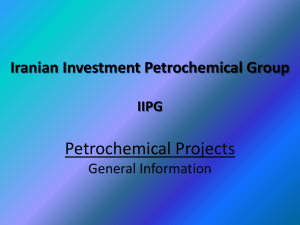
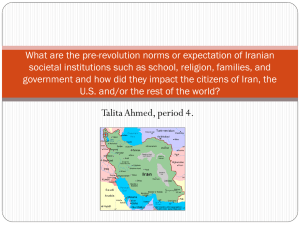
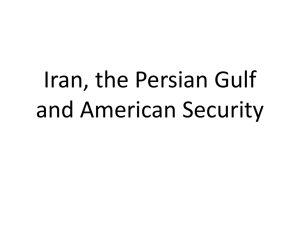

![Amir Shams [ card ] 02](http://s2.studylib.net/store/data/005340099_1-e713f7ae67edd60d4c53ae5bb9448166-300x300.png)
